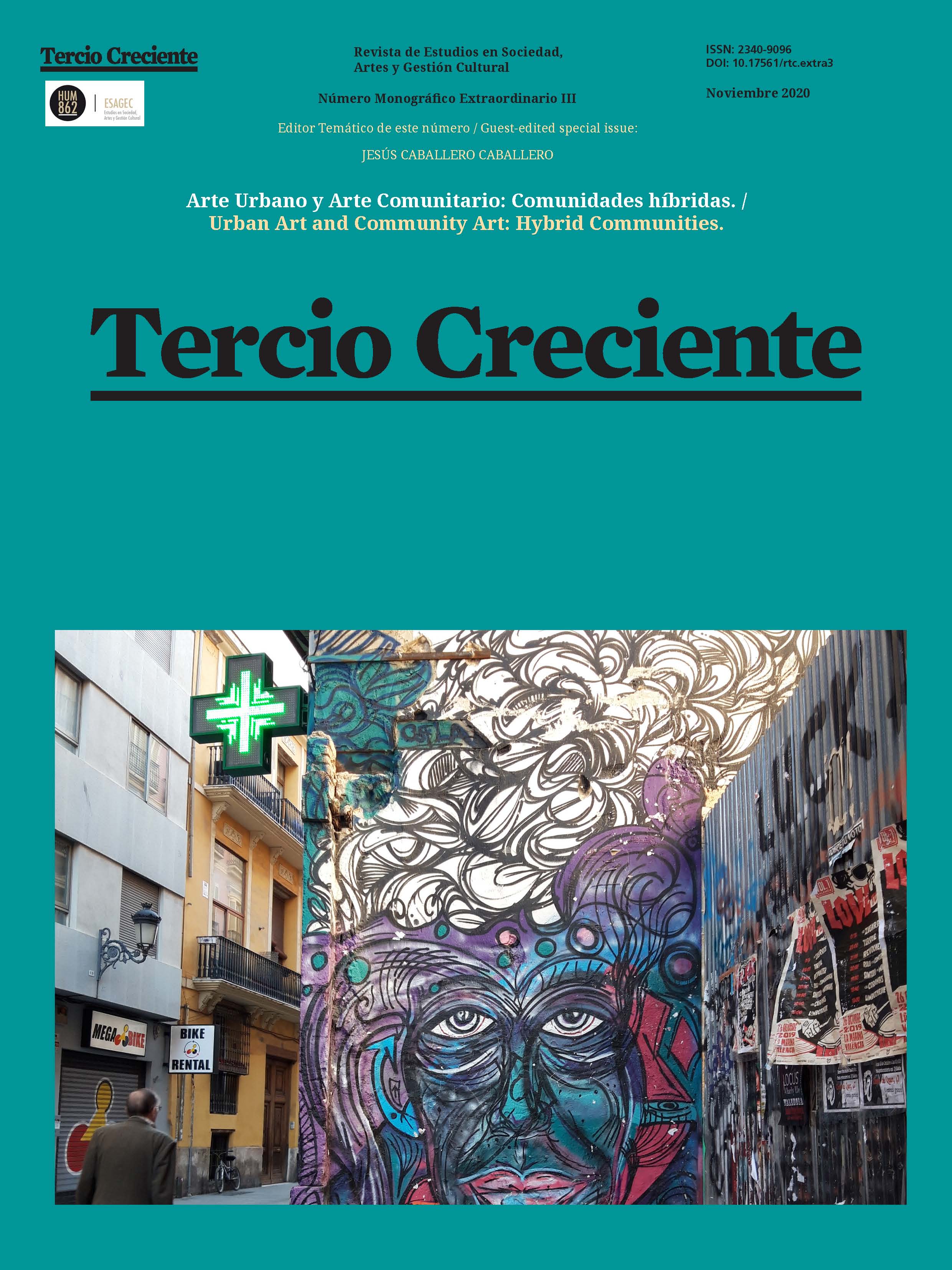Batching memory from the collective
Artistic hybrids and transformation of the socio-cultural context
DOI:
https://doi.org/10.17561/rtc.extra3.5724Keywords:
public art, collective memory, mediation, social imagery, hybridization, hybridization processesAbstract
If we speak of collective memory we cannot establish ourselves in a conviction of stability and solidity, on the contrary, we must attend to the coexistence of multiple past visions that help to constantly redefine identity from the needs of the present. The dialectic that we find here between the new and the old, between the everyday and the unheard of can be the place where collective memory can take the threads with which to weave a fabric that builds our social identities. Making these threads accessible, in the plural, should be an impulse on which we can base ourselves to transform the socio-cultural context in an egalitarian way. Different ways of spinning, or what is the same, of creating continuity according to past conditions, those of the present and future projects; in such a way, identity will be recognized as a flexible fabric with an uncertain end. It is in the historical and collective memory, without prejudice to individual and subjective memories, where spaces of freedom are built that restore dignity and cement positive projections for the future.
Nowadays, hybridization processes in all their dimensions have become notorious. Also from art, as a manifestation that expands these terms in parameters of sensitivity and social imagination and that helps us to perceive the world in a total dimension of its possibilities. In this text we will show the possibility of transforming artistic actions into processes of social facilitation and mediation based on concrete experiences. Framed in an era where the space we practice is shown as a series of locations that contain strategies, uses and implicit connotations of a great variety. Empowering ourselves with these strategies from the collective to transform our daily space is a tool of enormous value linked to the construction of positive utopias. Culture is a tool that allows us to specify this social content. It is an element that shapes the landscape and plays a key role in the contextual arrangement of space in our cities. Art can be transformed into a continuous event that offers a vision of reality, from an open sensibility to the infinite condition of things. The real that does not exhaust the possibilities of the non-existent.
Downloads
References
Alemany, E. (2014) València. Una ciutat intermitent o una ciutat vibrant? (http://ultramarinosalemany.wordpress.com/2014/09/30/valencia-una-ciutat-intermitent-o-una-ciutat-vibrant/) (12/12/2014).
Álvarez, N. (2013) El espacio público neoliberal. La desaparición del espacio social. Junta de Andalucía: La ciudad viva (http://www.laciudadviva.org/blogs/?p=20126) (2/09/2014).
Estal, D. Marrades, R. Segovia, C. (2014) La ciudad construida. Del plan urbanístico al proceso ciudadano. Barcelona: Ed. Fundació Nexe, Colección Demos nº6.
Harvey, D. (2013) Ciudades Rebeldes. Del derecho de la ciudad a la revolución urbana. Madrid: Ed. Akal.
Hutton, W. (2013) Give us back our públic spaces so we can have access to all areas. (http://www.theguardian.com/commentisfree/2013/jun/16/retail-development-public-access-planning) (22/08/2020).
Marrades, R. (2014) ¡Urbanismo punk! Cómo las prácticas urbanas espontáneas mejoran las ciudad. València: elDiario.es (https://www.eldiario.es/comunitat-valenciana/la-ciutat-construida/urbanismo-punk_132_4750241.html) (27-08-2020).
Romero, J. Salom, J. Albertos, J. Pitarch, M. Melo, C. (2018) Trayectoria y recomposición metropolitana post-crisis en Valencia. A la búsqueda de nuevos modelos? La Rioja: Ed. Dialnet. Revista Ciudad y Territorio, Estudios territoriales.
Downloads
Published
Issue
Section
License
Those authors who have publications with this magazine, accept the following terms:
The authors will retain their copyright and will guarantee to the journal the right of first publication of their work, which will be simultaneously subject to the Creative Commons Attribution License that allows third parties to share the work whenever their author is indicated and its first publication is this journal.
Authors may adopt other non-exclusive license agreements to distribute the version of the published work (eg to be deposited in an institutional telematic file or published in a monographic volume) provided the initial publication is indicated in this journal .
Authors are encouraged to disseminate their work via the Internet (eg in institutional telematic files or on their website) before and during the submission process, which can produce interesting exchanges and increase the number of citations of the published work..
In case of being accepted works will be published under Creative Commons license.





















